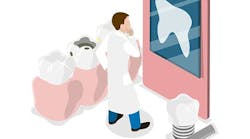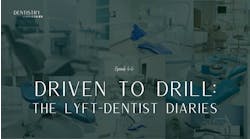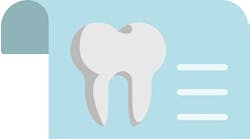by Max Wilson, DDS
I am unaware of any studies that are chiseled in stone regarding the percentages of success and failure rates when bringing additional dentists into a practice. However, such an arrangement appears to have a 90 to 95 percent chance of failure.
The definition of failure in this scenario is that the “associate” dentist leaves the practice because either his or her or the owner’s expectations were not achieved. These unsuccessful attempts at developing long-term, multi-doctor dental practices have been a continuing disappointment to the dental profession.
Granted, some practices with associate dentists are highly successful, but the fact remains, the successful practices are in the minority. The underlying reasons are often puzzling, but I believe with the right plan, they can succeed.
Scenario 1 - Employee
When a second dentist is added to an existing practice, he or she may be hired as an employee of the owner dentist or offered the option of making a financial commitment to the practice and assuming part or full ownership. If the new doctor chooses or is offered an employee position, it frequently becomes a stepping stone on the path to practice ownership. The bad news is that the associate’s eventual ownership position may not occur within the practice that initially employed him or her, but within the practice of another dentist. Unfortunately, a large number of employee dentists leave their first offices for a multitude of reasons, but most frequently the bottom line for their departure is unfulfilled expectations, either on the part of the owner or the employee. Whatever the reason for the departure of the associate, ill feelings are frequently left in its wake.
Scenario 2 - Ownership position
The second scenario is one in which the associate dentist makes a financial commitment toward an ownership position in the practice. An associate of this type is highly unlikely to leave. It has been my experience that when the addition of an associate is part of the owner’s preplanned exit strategy, then there is nothing safer than providing an ownership position to that new dentist ... and the sooner the better!
Many dentists who are considering buying into an existing practice have serious concerns about whether they will be a good match for that particular practice and if they will enjoy practicing with the owner. Those are reasonable concerns. If those concerns are significant, I suggest the associate negotiate a brief trial period of employment.
Ninety days should be the maximum length of time for the trial period. The reason the trial period should not be more than 90 days is that the associate will not have been through a normal recare cycle and will not have been in the practice long enough to develop professional relationships with the staff or the patient base. This provides additional security for the owner doctor keeping his staff and patient base secure.
During my years in high school, college, and even dental school, I had numerous part-time and summer jobs. In every one of them, I knew within two weeks whether I liked working in that job or not. It should be no different in a dental office. Providing a potential “owner” associate with a short-term employment contract will give both the practice owner and associate enough time to make good decisions regarding a permanent arrangement. If the trial period has been productive, both parties will have no reluctance in executing a contract for the purchase of part or all of the practice by the associate. If the trial period proves to be unsatisfactory for either party, then the two dentists can shake hands and go their separate ways after the trial period with no hard feelings.
The bottom line is that owners must carefully examine their reasons for adding a new dentist to the practice, as well as define what they want the associate to bring to the practice. On the other hand, the associate must clearly understand what he or she is looking for, if those objectives are unidirectional, or if they are conducive to creating a long-term future within the practice.Max Wilson, DDS, is the founder of Professional Practice Associates Inc., a full-service practice brokerage firm doing business in Oklahoma and Arkansas. He is a member of American Dental Sales, the American Academy of Dental Practice Administration, the American Dental Association, and the Oklahoma Dental Association. He may be reached by phone at (405) 720-2093 or by writing to him at 5909 N.W. Expressway, #212, Oklahoma City, OK 73132.





